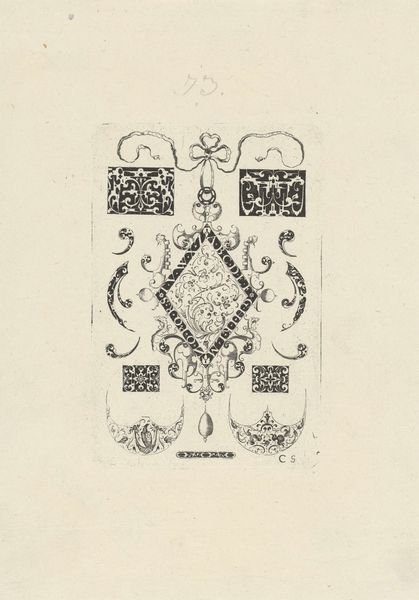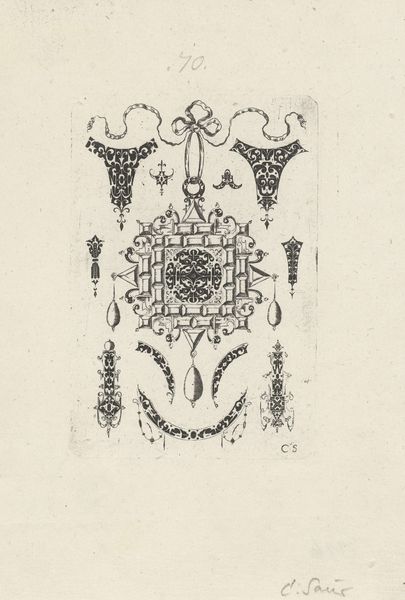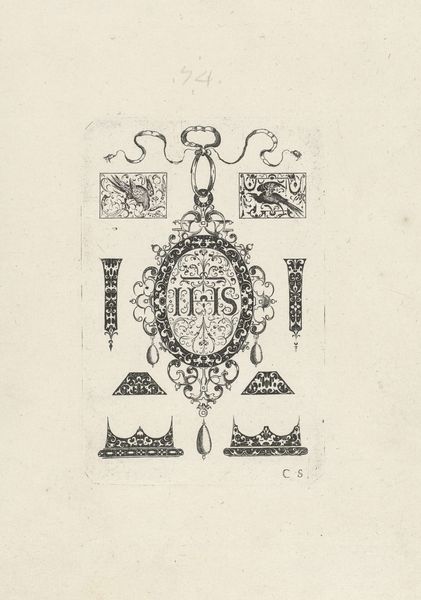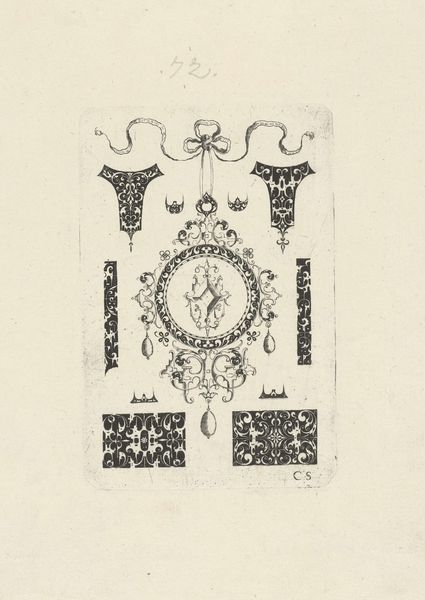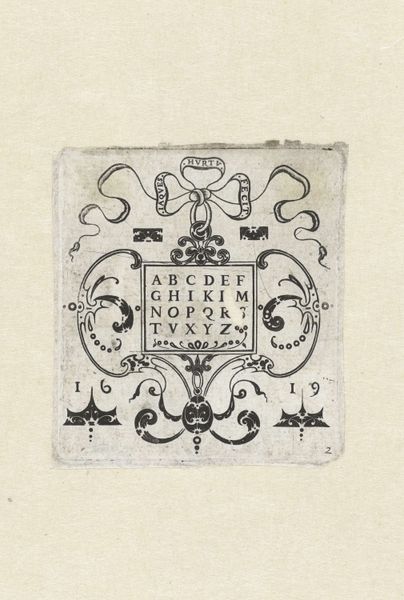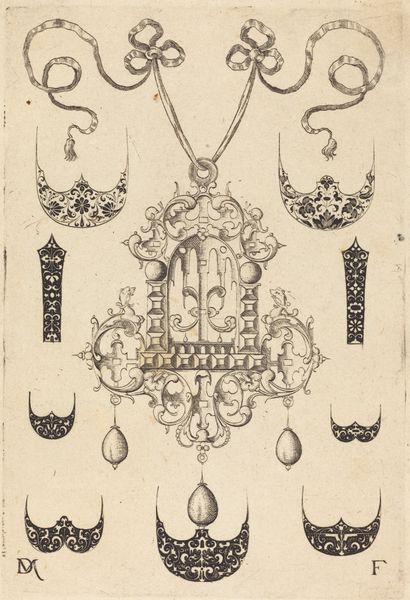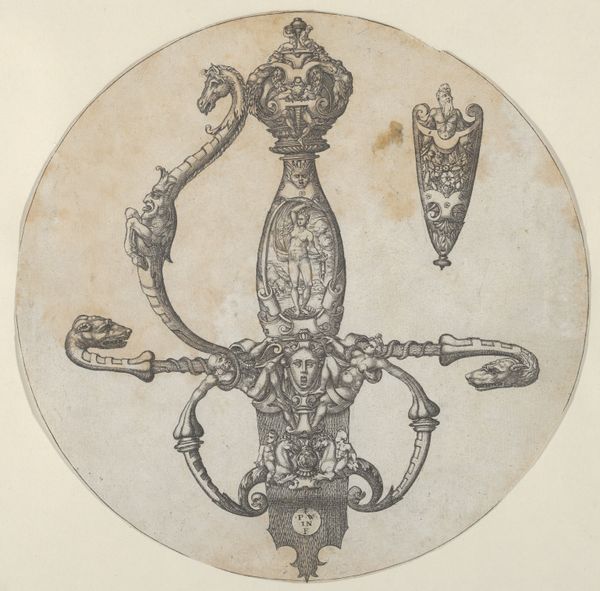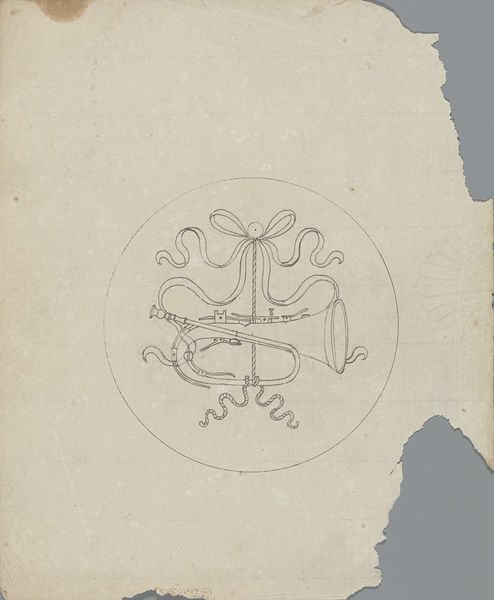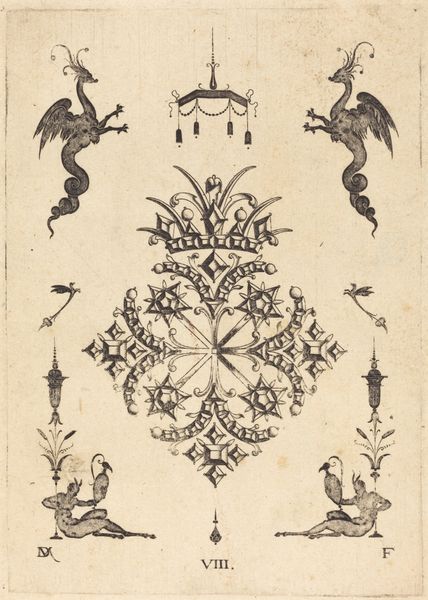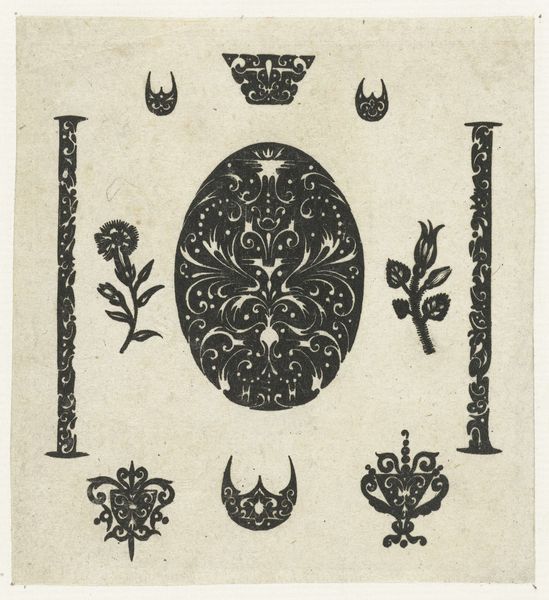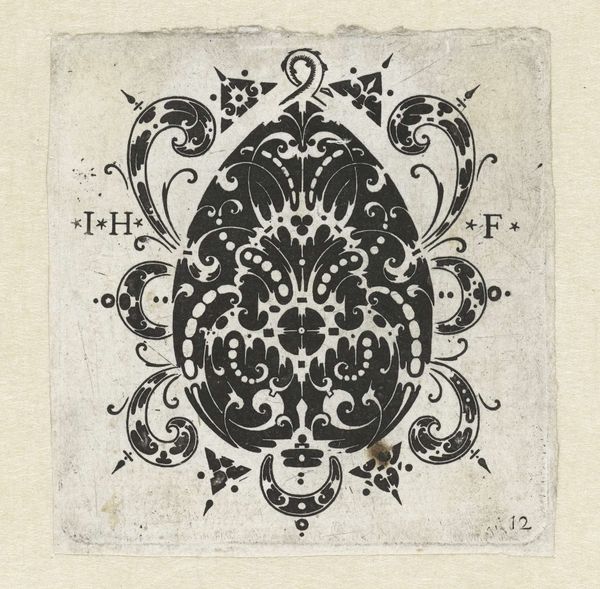
drawing, print, ink, engraving
#
drawing
#
medieval
#
baroque
# print
#
pen sketch
#
old engraving style
#
ink
#
geometric
#
line
#
engraving
#
calligraphy
Dimensions: height 110 mm, width 75 mm
Copyright: Rijks Museum: Open Domain
Curator: So, we're looking at "Titelblad, hanger met de titel," an engraving in ink dating from around 1575 to 1635. The line work is astonishingly detailed, especially given its size. Editor: I find it intricate, but also somewhat overwhelming. How do you interpret this work? What makes it stand out to you? Curator: Well, let’s consider the means of production. Engravings like this weren’t mere decorations; they were essential for disseminating information and designs. Notice the variety of motifs – heraldic symbols, geometric patterns, calligraphy. Each element would have demanded specific tools and expertise. It speaks to the social context where skilled artisans had great prestige for labor-intensive production. Editor: I see what you mean about it not just being decorative. Is the fact that it’s a print significant? Curator: Absolutely! The reproductive nature of printmaking democratized access to imagery. Multiple impressions could be made, making these designs available to a wider audience of craftsmen, jewelers, and other artisans. Think about the materials: the copper plate, the inks, the paper. These were valuable commodities, signifying an investment in the spread of visual culture. And each stage of its production – from drawing to engraving to printing – would have involved different forms of skilled labor, impacting social hierarchy within workshops and beyond. Editor: It's like a catalog of designs then. Each a product of its unique process and material constraint? Curator: Precisely! Consider the relationship between the artist, the materials, and the patron. This isn't simply about aesthetics; it's about the economic and social relationships embedded within the production and consumption of this object. By shifting our focus from artistry to means of production we are better equipped to see cultural influences, like that of the baroque and the medieval styles present here. Editor: That’s a really helpful way of looking at it; considering the labor and materials makes it much more grounded and meaningful than just analyzing it visually. Curator: Exactly! It invites us to see art not just as an object of beauty, but as a product of complex social and material relations. It makes you wonder where each came from.
Comments
No comments
Be the first to comment and join the conversation on the ultimate creative platform.
